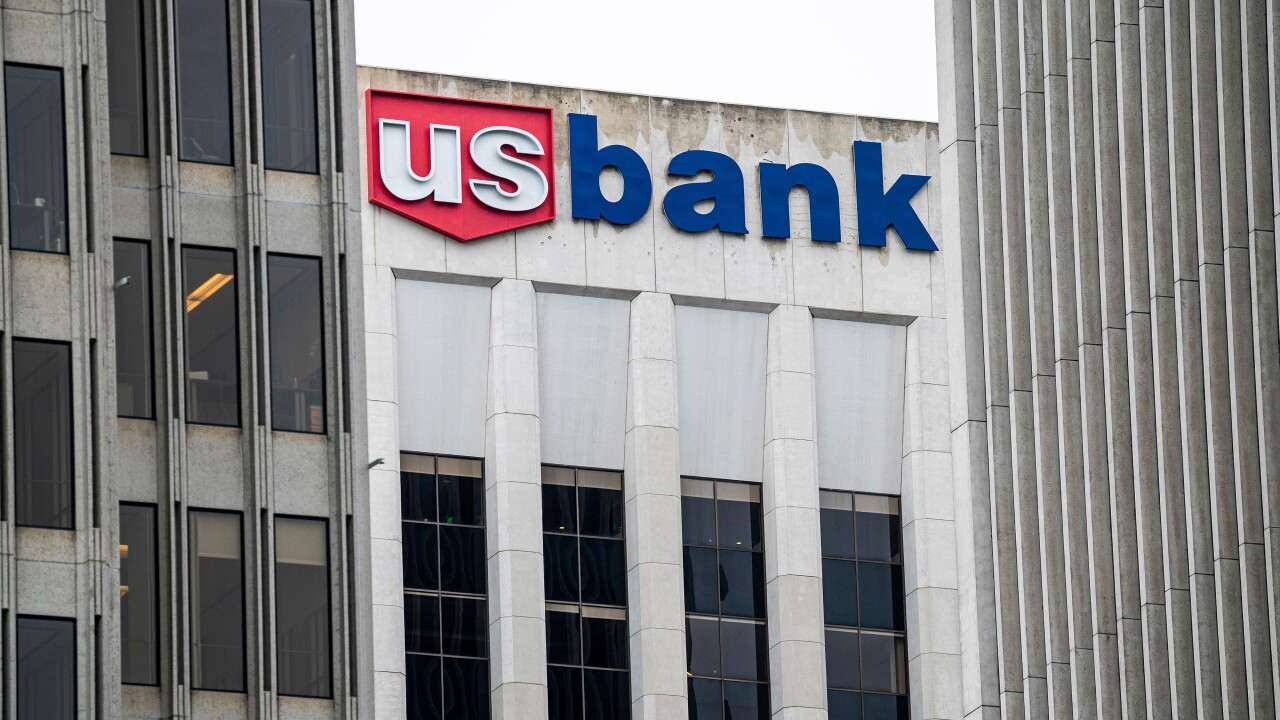-
Banks and other lenders appear to be waiting on a regulatory signal from the Federal Housing Finance Agency before approving loans for borrowers with less than stellar credit profiles.
August 7 -
Banks are still feeling negative effects from last year's sudden rise in medium- and long-term interest rates, but plenty of signs in the Federal Deposit Insurance Corp.'s latest industry update continue to point to a lending resurgence in the near future.
May 28 -
The Federal Deposit Insurance Corp.'s fourth-quarter report on industry health showed continued challenges to growth, but the second straight increase in net interest margins is a promising sign for the future.
February 26

WASHINGTON The industry's lending spigot has mostly produced dribs and drabs since the crisis, but that changed significantly in the second quarter.
After a prolonged stretch of modest, if any, balance sheet growth, loan balances shot up by $178 billion in the quarter the highest amount since 2007 and net interest income had the largest year-over-year increase in more than three years.
The Federal Deposit Insurance Corp.'s Quarterly Banking Profile showed loans rising for almost all major categories, with nearly three-quarters of all institutions reporting a higher loan balance. The growth is more pronounced at community banks, where balances over the past year have increased 7.6% versus 4.9% for the industry as a whole.
Calling the improvement "broad-based," FDIC Chairman Martin Gruenberg said the higher balances continue a recent trend in past quarters during which the industry sustained a positive direction for loans, although the growth was moderate.
After a post-crisis period with the industry mostly "preparing balance sheets, strengthening capital and liquidity and recovering from the aftermath of the crisis and ensuing recession, we now have a prospect of moving into a period of higher growth for the economy" with "increasing credit demand and greater opportunity for the industry," Gruenberg said at a briefing on the report. "Those are all positives."
Still, lending is not yet a primary earnings driver. The FDIC attributed the industry's robust $40.2 billion in net income a 5.3% leap over a year earlier and the second-highest profit ever mostly to lower expenses. And Gruenberg noted continued supervisory concerns, including interest rate pressures and growth in loans to highly-leveraged commercial borrowers.
"Industry revenue has been under pressure from narrow net interest margins and lower mortgage-related income. Institutions have been extending asset maturities, which is raising concerns about interest-rate risk," he said. "And banks have been increasing higher-risk loans to leveraged commercial borrowers. These issues are matters of ongoing supervisory attention."
But much of the news from the FDIC's report was positive for bankers, particularly the industry's loan balance, which totaled $8.1 trillion and rose for the fifth straight quarter. The growth in both nominal and percentage terms was the highest since loans grew by $203 billion in 2007. (Technically, loan growth was higher at the outset of 2010, but that was due to a change in accounting rules.)
But perhaps more notable than the overall number was the consistency in growth among loan categories. All major categories showed positive growth from the first quarter except home equity lines of credit. Commercial and industrial loans grew by 3.1% to $1.66 trillion, residential mortgages grew by 1.2% to $1.84 trillion and credit card balances grew by 3% to $678 billion.
"Primarily what we're seeing is a broadening across more categories and across a much higher proportion of institutions," said Ross Waldrop, the FDIC's senior banking analyst.
After the FDIC's briefing, James Chessen, the American Bankers Association's chief economist, said the loan growth corresponds with improving confidence from commercial borrowers about the economy.
"As the economy improves, it's natural that banks are going to put more money on the street because the risks of not getting repaid go down," Chessen told reporters. "In an improving economy, borrowers are better, they have the capacity to repay it and banks are anxious to meet that loan demand."
He suggested that while banks are aware of risks such as that from interest rate fluctuations, the industry has to be focused first and foremost on borrower demand.
"Interest rate risk is a drum that the regulators will continue to beat," Chessen said. "The industry is anxious to get money on the street, it's a very competitive environment and borrowers know they can push out the terms of that loan. In that environment, the banks need to meet that. Are banks sensitive about interest rate risk? Of course they are. But the goal is to meet the demands of the borrowers."
Only 6.8% of institutions failed to make a profit in the quarter, the lowest level since the first quarter of 2006. Positive drivers included a 22% decline in the industry's loan loss provision from a year earlier to $6.6 billion. Salary and benefit expenses dropped 0.8% as institutions reported over 37,000 fewer employees than from a year earlier. Expenses related to goodwill impairment were sharply down as well, totaling only $192 million. (Such expenses were $4.4 billion a year earlier when two banks reported large impairment charges.)
But last year's rise in medium- and long-term interest rates is still presenting the industry with challenges.
Even though net interest income rose 1.9% from a year earlier to $105.4 billion the biggest increase in 14 quarters the average net interest margin dropped by 10 basis points to 3.15%, the lowest level since 1989. Lower noninterest income was also attributable to a year-over-year decline in net operating revenue for the fourth straight quarter. The 5.3% drop in noninterest income to $63.5 billion was spurred in significant part by a 42% drop in income from the sale, securitization and servicing of 1-to-4 family residential mortgages. Trading income fell by more than 10%, the fourth straight decline.
Yet, just as community banks posted higher loan growth, smaller institutions by comparison also appeared to escape some of the downsides of higher rates. Whereas nine of the 10 largest banks reported lower margins last quarter compared with a year earlier the average net interest margin for community banks rose by 4 basis points to 3.61%.
"The negative effect on noninterest income, particularly income from mortgage lending and from trading, was greater at large banks, while the positive implications of a steeper yield curve for net interest margins, combined with strengthening loan growth, were more significant for smaller institutions," the FDIC's report said.
The FDIC report said net charge-offs fell to a seven-year low, dropping to nearly $10 billion from $14.1 billion a year earlier. The 6.9% decrease in noncurrent loans from the first quarter was the 17th such decline. Loan-loss reserves fell by 3% during the quarter the 17th such decline to $128 billion. Still, the coverage ratio of loss reserves to noncurrent loans rose nearly 3 percentage points to 70.5%. The ratio has improved for seven straight quarters.
The number of institutions on the agency's "Problem List" fell by 57 to a total of 354, the lowest level in over five years. The Deposit Insurance Fund's balance rose by $2.2 billion to $51.1 billion, and the ratio of that balance to insured deposits grew by 4 basis points to 0.84%.





